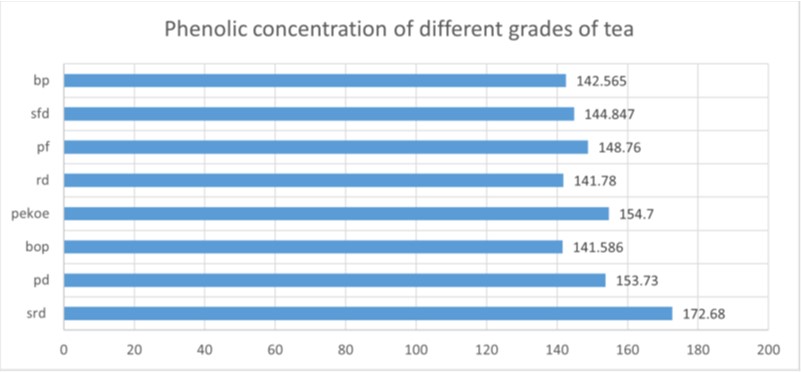
Journal of Nutrition Research
An official journal of IAPEN India association




Journal of Nutrition Research
DOI: 10.55289/jnutres/v12i1_23.27
Year: 2024, Volume: 12, Issue: 1, Pages: 32-38
Original Article
Amrithendu Chandran 1 , Archana Prabhat ✉ 2
Received Date:19 September 2023, Accepted Date:06 February 2024, Published Date:18 June 2024
Tea is the most popular non-alcoholic beverage in the world. Among tea producing countries the principal producers are China, India, Sri Lanka, Kenya and Indonesia which account for 80% of global production. Tea leaf grading, which is used in the tea industry, is the process of assessing goods based on the character and state of the tea leaves themselves. The main target of the present study was the evaluation and comparison of total phenolic content among different tea grades. The tea grades with the highest and lowest polyphenolic contents were also analysed. Eight different grades of black tea were collected from the Devon tea estate, Chikkamagaluru. The prepared samples were assayed to evaluate their total phenolic content spectrophotometrically at 725nm. Folin-Ciocalteu method was used for estimation of total polyphenolic content. The results showed that, there were significant differences in the total polyphenol content from different grades of black tea samples. Tea grade SRD has the maximum amount of total polyphenols, or 172.68 g GAE (0.01726 g GAE per 100g), while grade BOP has the lowest amount, or 141.58 g GAE (0.014158 g GAE per 100g).
Keywords
Black tea, Tea grades, Phenolic content, Folin-Ciocalteu
© This is an open-access article distributed under the terms of the Creative Commons Attribution License, which permits unrestricted use, distribution, and reproduction in any medium, provided the original author and source are credited.
Published By India Association for Parenteral and Enteral Nutrition (IAPEN)
Subscribe now for latest articles and news.